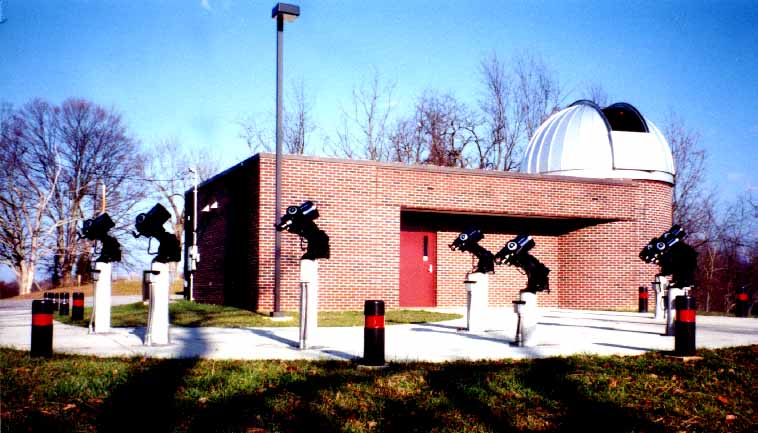
These are optical (visible light) telescopes.

These are optical (visible light) telescopes.
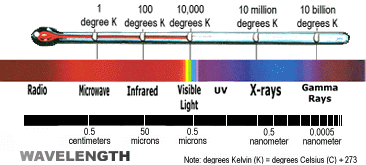
The electromagnetic spectrum.
Visible light is just one type of electromagnetic radiation.
Radio waves, infrared light, ultraviolet light, X-rays, and gamma rays
are other kinds of electromagnetic radiation.
Radio waves have the least energy, and gamma rays have the most.




Left: the
Green Bank
100 meter radio telescope in Green Bank,
West Virginia.
Second from left: the
Stratospheric Observatory for Infrared Astronomy.
Next: The
Far Ultraviolet Spectroscopic Explorer
.
Right: the
Compton Gamma Ray Observatory.
Astronomers have (or have had in the recent
past) telescopes that operate in all of the
major regimes of the electromagnetic spectrum.
Coming soon! A
much higher resolution X-ray picture
of this galaxy group from Chandra! Stayed tuned!
For more images from the Chandra telescope, see the
Chandra web page.
Last updated: 7/21/02

The
Chandra X-Ray Telescope
.
This telescope was launched into
space in July 1999. X-ray telescopes must
be above the Earth's atmosphere, since
the atmosphere absorbs X-rays.
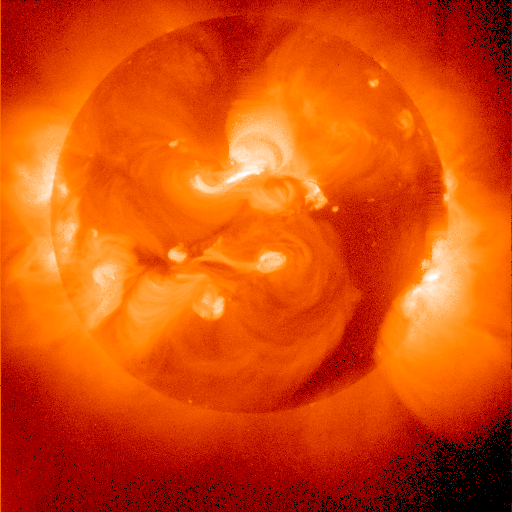
The Sun, as seen at X-ray wavelengths.
This image movie was obtained from
the
Yohkoh X-ray satellite.
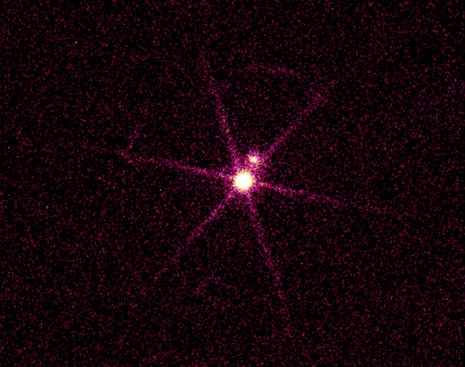
A Chandra X-ray picture of the double star
Sirius A (the fainter star)
and Sirius B (the brighter star).
Sirius B is a white dwarf star,
which is very faint at optical wavelengths but very bright in the X-ray.
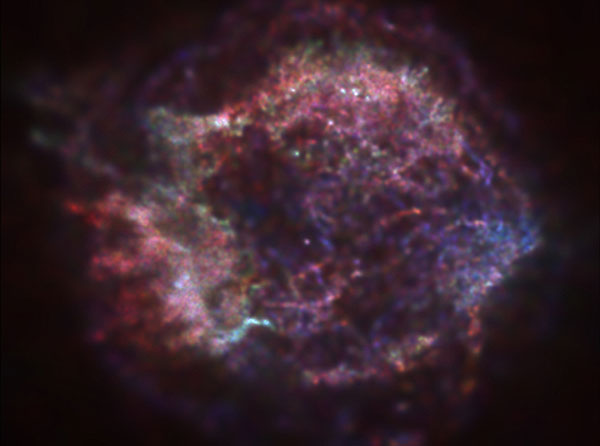
A Chandra X-ray image of the
Cassiopeia A supernova remnant.
This is
very hot gas that was blasted into space
about 300 years ago,
when a star exploded.
The bright point in the center may be a neutron star,
the very dense core of the star left behind after the supernova
explosion.
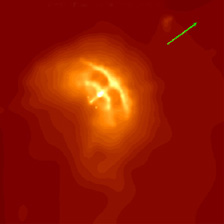
The neutron star in
Vela supernova remnant,
as seen by Chandra.
The two arcs of X-ray emission seen in this picture are
believed to be the near edges of two tilted rings of X-ray emission,
caused by shock waves rushing away from the neutron star.
The straight line in the middle is a jet of material shooting out
of the poles of the neutron star.
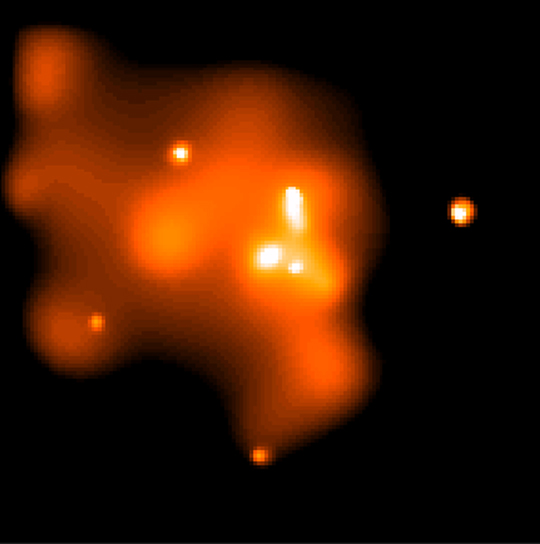
A picture of the central region of our home galaxy, the Milky
Way galaxy. The white source near the center of the image
is Sagittarius A*, a disk of hot gas swirling into
a black hole with a mass about two million times that of the Sun.
The extended emission around Sagittarius A* originates from hot
gas near the center of our galaxy, heated by supernovae explosions
and perhaps strong winds from massive stars.

The
Orion
Nebula, as seen by Chandra.
A cluster
containing
about a thousand young stars can be seen in this image.
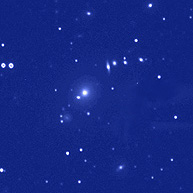
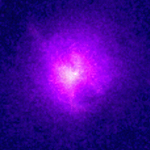
The picture on the left is an optical image of
the Hydra A cluster of galaxies. The picture on the right
is the same part of the sky, as seen in the X-ray by Chandra.
In the optical pictures, we are seeing the combined light
of the billions of stars that make up the galaxies.
In the X-ray picture, we are seeing very hot intracluster gas
that fills the cluster.
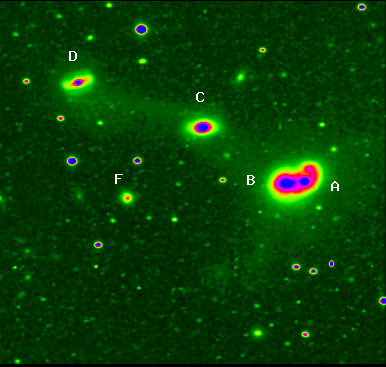
An optical image of the
NGC 4410 galaxy group, from the
Southeastern Association for Research in Astronomy (SARA) 0.9m
optical
telescope on Kitt Peak in Arizona.
The inner part of this group contains five galaxies, at least four
of which appear to be connected by bridges. Two tails extend to the
southeast and northwest of NGC 4410A+B.
This group will be observed with the Chandra X-ray telescope in
April 2002.

Here is an
X-ray map of the NGC 4410 group from an earlier
X-ray telescope,
the
ROSAT satellite (contours). This image is superposed
on the SARA optical image (colors).
Both NGC 4410A and NGC 4410D are active galaxies, with
X-ray bright nuclei.